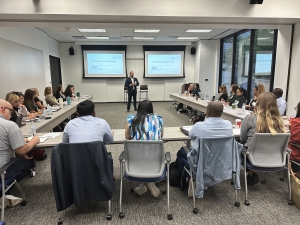Analysis Will Help Guide Policymakers in Developing Regulatory Strategies to Further Reduce Emissions
 On June 24, the New Mexico Oil and Gas Association (NMOGA) published a Methane Mitigation Roadmap, outlining areas where industry and government can work together to continue reductions in methane emissions.
On June 24, the New Mexico Oil and Gas Association (NMOGA) published a Methane Mitigation Roadmap, outlining areas where industry and government can work together to continue reductions in methane emissions.
The roadmap identifies the four most reported sources of methane emissions from oil and natural gas production using EPA data and provides specific, cost-effective regulatory suggestions and considerations based on industry experience, as well as the best available science and peer-reviewed data.
“There is nothing we value more than safeguarding the people and places we care about the most, and that means working continuously to protect the environment and reduce and control methane emissions. It’s a responsibility we take personally,” Ryan Flynn, Executive Director of the New Mexico Oil and Gas Association, said.
“We know that we have a responsibility to reduce our methane emissions and this report underscores we are, in fact, reducing emissions through responsible operations,” he said. “We will continue collaborating with willing partners in the public and private sector, while investing in advanced technology and innovation to achieve even greater reductions in methane emissions.”
The roadmap is grounded in the first-ever analysis of New Mexico-based EPA Greenhouse Gas Reporting Program data and is the most comprehensive dataset of state-level emissions available. From 2011 to 2017, the data shows:
- New Mexico methane emissions from oil and natural gas production decreased by 51%.
- Combined oil and natural gas production climbed 31% over the same period.
- The San Juan Basin reported the most dramatic decline as methane emissions collapsed by 55%, while combined oil and natural gas production fell 24%.
- In the Permian, methane emissions have fallen 35% while production has soared 101%.
NMOGA’s roadmap includes analysis and recommendations for the four highest reported sources of methane emissions: fugitive emissions, storage tanks, pneumatic devices and liquids unloading operations
With appropriate regulatory flexibility, NMOGA’s roadmap outlines support for annual leak detection and repair, with exemptions for:
- low producing wells and facilities that are not required to obtain a Notice of Intent;
- storage vessel control requirements with appropriate thresholds;
- phase-out of high-bleed pneumatic controllers unless required for safety function;
- onsite monitoring of manual liquids unloading operations.
Additional layers of state regulations will impose further requirements and costs without attendant emission reductions, according to the report.
Earlier this year, Gov. Michelle Lujan Grisham tasked state agencies and regulatory bodies with identifying and crafting regulations to reduce methane emissions from oil and gas operations. Following Gov. Lujan Grisham’s lead, the New Mexico Environment Department and New Mexico Energy, Minerals and Natural Resources Department have initiated a process to develop strategies to reduce emissions, and both departments have planned joint stakeholder engagement meetings to be held in Farmington, Albuquerque and Carlsbad later this summer.




